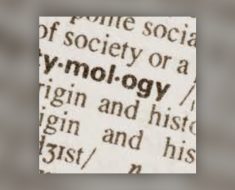Introduction
Generative AI has been the hottest topic of the 21st century, revolutionizing industries with its ability to create text, images, music, and even entire virtual worlds, all with the touch of a button.
From video editing to music creation, GenAI rules every sector. This technology transforms fields like art and entertainment, significantly impacting healthcare, finance, and education. As we continue to explore its potential, generative AI promises to reshape our understanding of creativity and innovation in unprecedented ways.
“Generative AI is the most powerful tool for creativity that has ever been created. It has the potential to unleash a new era of human innovation,” said Elon Musk.
Indeed, it is the most powerful technology in the Artificial intelligence space that we have come across. Whether you’re a student, graduate, working professional, or even a tech enthusiast, now it is a must for you to understand how GenAI paves the way to different opportunities and sparks your innovation. In this blog, let me help you understand the importance of Generative AI today and its endless possibilities to drive innovation and rethink our future. By the end of this article, you will find the link to the free Generative AI Course.
What is Generative AI?
Let’s reiterate in a better way!!!
Generative AI is commonly used to refer to artificial intelligence models that can generate new content. But what truly makes generative AI stand out? Well, it can generate new content, from text and images to music and even code, by learning patterns and structures from existing data. Unlike traditional AI, which works based on a pre-defined set of rules and logic, GenAI can create fresh content while mimicking how humans would do the same.
Here is the song created by Suno AI:
Link: Rain and Sound

I believe whatever we have explored about GenAI is just the tip of the iceberg. A lot in this field will ease our work in different ways. Further, I am going to tell you how one can leverage GenAI.
How can we leverage Generative AI?
There are many ways, but I have jotted down some major use cases of Generative AI:
1. Unleashing Creativity and Innovation
Sometimes, humans may find themselves at the end of a creative roadblock. In such scenarios, Generative AI can empower individuals and businesses to push their limits and boundaries of creativity. It can weave stories, create beautiful art pieces, compose music, and even design new products. These are just some of the possibilities I’ve listed, but the possibilities are endless. This astonishing piece of technology allows creators and artists to explore untapped territories and create unique works of art. Tools like ChatGPT, Midjourney, and Microsoft’s Co-pilot are examples of tools capable of creating such art.
For instance, Let’s create a good short story for a 3-year-old kid using ChatGPT.

Converting the same story into the Hindi language

Let’s create a comic using Microsoft Copilot

Here’s the Graphic

Enhancing Productivity and Efficiency
GenAI has helped automate repetitive tasks, letting professionals focus on more strategic and important tasks in marketing, entertainment, software development, etc. For instance, ChatGPT and Microsoft Co-pilot can help you draft emails, generate basic code snippets, or create marketing copies. Adobe’s Premiere Pro, fueled by GenAI, has also speed up the video editing process by 40%. One can save time, significantly faster workflows, and increase productivity.
GenAI in Editors



Personalization at Scale
One of GenAI’s most interesting and powerful applications is its ability to provide personalized recommendations at scale. From tailored experiences for users on streaming platforms to customized marketing messages based on the customer’s profile, GenAI can analyze individual preferences and behavior to deliver content that resonates with each user. This level of personalization can help increase customer satisfaction and enhance loyalty. OTT platforms like Netflix and Hulu have already begun leveraging GenAI for personalization.
Also read: Behind the Screen: How Netflix Uses Data Science?

Advancing Scientific Research
Nowadays, GenAI has begun playing a crucial role in accelerating scientific discoveries. Not only can GenAI analyze tremendous amounts of data to identify patterns and generate hypotheses, but it can also help researchers in the field of medicine discover drugs, genomics, and climate science. By automating data analysis and prediction, GenAI helps scientists make breakthroughs faster and more efficiently. For example, Scripps Research and Northwestern University experts have created the Early Warning Anomaly Detection (EWAD) system to forecast viral pandemics and provide longer lead times to address oncoming health crises.

Also read: Transforming Customer Engagement with Generative AI
Generative AI and Its Impact on the Definition of Art
With every passing day, you must know that the field of GenAI continues to evolve, and its impact on various industries will only steadily increase. The future promises even more sophisticated models that can generate higher-quality content. Sora is one fine example of GenAI’s exemplary growth in video generation. But with all these developments, there’s one important question we are yet to find an answer to. Can AI-generated images be considered as “art”? Well, this is tricky terrain to navigate!
As per a reference from the Oxford Dictionary, “Art” is “the application or expression of human being’s creative skill and imagination.” This can be any visual form, for example, even a simple painting or sculpture, producing works to be appreciated primarily for their beauty or emotional power.”
While some people argue that if an artist uses his creativity and control in the process, an AI-generated artwork should be considered art, others believe that true art is uniquely human and that generative AI replicates existing patterns in some way or another. One thing is certain: this topic is very subjective and open to interpretation. As generative AI technology evolves, so will the conversation surrounding its role in the art world. With the evolving generative AI tech, let me post one more question.
The question is, “If everyone can create art, will there be a need for professional artists?”
While answering this, let me share an interesting snippet based on a real-life incident. An artist entered a photography contest and submitted the following image.
With this Image, the artist wins a photography contest after generating an AI image but forfeits the prize.

Surprisingly, this image also won him the first prize. But when he disclosed the results, the photographer declared that he didn’t take this shot but generated it using an image generation tool! He even forfeited his prize. From this, it’s clear: The choice really is ours! We can take up the responsibility or let ourselves be taken over by the generative flow.
GenAI is here to stay.
Notably, ethical considerations and responsible AI development will undoubtedly play a significant role in shaping this future, ensuring that AI is used for the greater good. One must truly understand and leverage the power of GenAI to unlock new domains, push the boundaries of innovation, and create a more inclusive world. As humans, we stand on the brink of a revolution in which the possibilities are endless, and the future is incredibly exciting.
Also read: Best Roadmap to Learn Generative AI in 2024
Conclusion
If you truly enjoyed this article, we have a surprise in store for you. Head to our FREE course on “Generative AI – A Way Of Life” and learn more about leveraging GenAI through real-world use cases.
Why Should You Join Our Free Generative AI Course Today?
You can unlock the power of AI with our transformative journey designed for beginners! Dive deep into AI-powered text and image generation using cutting-edge tools like ChatGPT, Microsoft Copilot, and DALL·E3. Master practical applications across various industries, understand ethical considerations and learn best practices. Whether you’re a content creator, business innovator, or AI enthusiast, this free Generative AI course will equip you with the expertise to harness Gen AI’s full potential and drive innovation in your field.
Enroll Now and Start Innovating!
Frequently Asked Questions
Ans. A solid foundation in machine learning and deep learning is usually required. This includes knowledge of neural networks, supervised and unsupervised learning, and experience with programming languages like Python. Familiarity with frameworks like TensorFlow or PyTorch is also beneficial.
Ans. You will learn how to implement and train generative models, understand their theoretical foundations, and apply them to various applications such as image generation, text synthesis, and style transfer. The course will also cover practical aspects like data preprocessing, model evaluation, and deployment.
Ans. Yes, Generative AI courses include practical assignments and projects to reinforce learning. These projects typically involve building and training your generative models using real datasets, ranging from creating synthetic images to developing AI-driven content generators. These hands-on experiences are crucial for understanding the practical challenges and intricacies of working with generative models.




